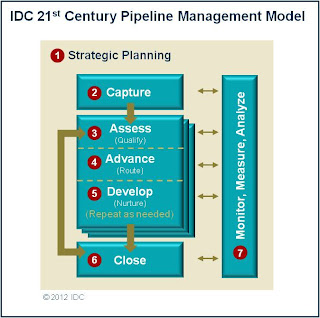Lead Management Report: IDC Finds Leaders are Smart, Agile, Automated, and Aligned

IDC CMO Advisory Service's latest best practice report, Realizing the Vision of 21st Century Lead Management, presents a newer, smarter way to conduct lead management that is better adapted to the reality of how customers buy today. Combining proven management science methods with best practices from leading technology companies, the new model is more scientific, more data driven, more agile, more automated, more aligned between sales and marketing, and more customer service oriented, than the 100+ year-old funnel. It's becoming common knowledge that the Internet has revolutionized B2B buyer's behavior, knowledge, and expectations. B2B marketers and sellers have outgrown the traditional funnel approach and are scrambling to adjust to the impact of the new buyer dialog. The new B2B buyer dialog presents the following challenges for lead management: Complexity: Lead management used to consist only of qualifying leads and passing the best ones to the sales team. Now mar